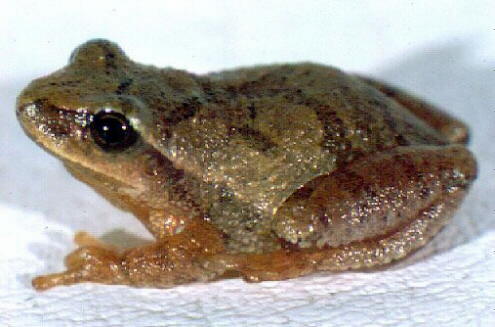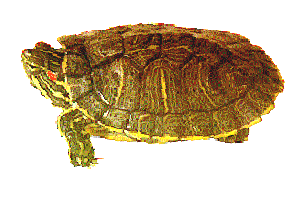On page 249 of book cited below, Prince Max described Hyla triseriata Wied. Later, as is often the case with species named long ago, the species was assigned to a different genus; the current name is Pseudacris triseriata (Wied). The common name is western chorus frog. Prince Max's description occurs as a note at the end of Chapter IX, entitled "Journey from New Harmony to St. Louis on the Mississippi, and Our Stay There, from March 16th to April 9th, 1833. The fact that the note does not occur at the end of the preceding chapter, on "Description of the Country about New Harmony, in Indiana, and Winter Residence there from October 19th, 1832, to March 16th, 1833," suggests that Prince Max's type specimen of the western chorus frog was not, as has been suggested elsewhere, taken from Rush Creek, about 4 miles south of New Harmony. I thank Ken Felsman for permission to use this image; a link to his gallery of photographs is provided below.


